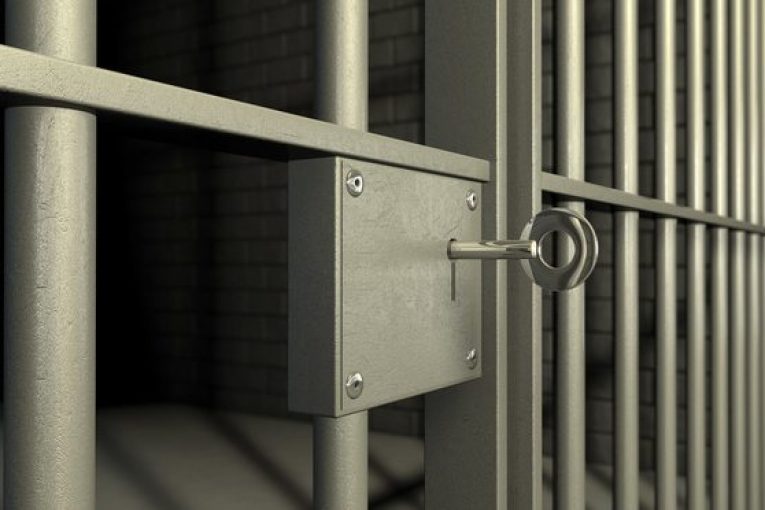

The Judicial Council of California is considering ending its temporary emergency rules governing the emergency bail schedule. The move comes as California begins a phased re-opening and the courts are beginning to restore services that have been curtailed or shuttered due to the pandemic.
Zero bail has been credited in helping to clear out California’s jails, where reformers have argued that the recidivism rate is low. But some sheriffs and DAs have complained about the rules being too restrictive, and in some counties prosecutors like Yolo County’s Jeff Reisig have sent out press releases each time someone released has committed a new crime.
Judicial Council Administrative Director Martin Hoshino in a release stated, “The Judicial Council acted quickly to safely reduce jail populations and halt evictions and foreclosures during an unprecedented global health crisis. These rules achieved their goals—to reduce harm, save lives, and help ‘flatten the curve’ of the pandemic. As a result, 51 California counties and our courthouses have started a phased, safe reopening. A statewide rule no longer serves our need to be flexible and responsive based on local health conditions.”
The COVID-19 emergency bail schedule set bail at $0 for most people accused, but not yet tried, of misdemeanors and lower-level felonies. As with a regular bail schedule, law enforcement could petition a judge to raise or deny bail if there was concern for public safety. Those accused of violent felonies, offenses requiring sex offender registration, domestic violence, stalking, or driving under the influence were not eligible.
The Judicial Council’s review of the rule comes as milestones were met: Prisons are expected to allow transfers of convicted inmates from jails in all 58 counties to state institutions by June 19, which will continue to lower jail populations.
In addition, more than 20,000 defendants accused of lower-level offenses have been released before their trials from California’s jails since the start of the pandemic, helping keep jails and courts from becoming vectors for the spread of COVID-19 between inmates, jail staff and surrounding communities.
“The Judicial Council took unprecedented action by instituting the temporary emergency COVID-19 bail schedule,” said Justice Marsha Slough, a Judicial Council member and chair of the Executive and  Planning Committee. “Despite being in uncharted territory, crime rates stayed at historic lows, and the vast majority of people released on the COVID-19 bail schedule did not reoffend. We are gratified that courts, prosecutors, defense attorneys, and law enforcement officials worked together in many counties to guard both public safety and the community’s health.
Planning Committee. “Despite being in uncharted territory, crime rates stayed at historic lows, and the vast majority of people released on the COVID-19 bail schedule did not reoffend. We are gratified that courts, prosecutors, defense attorneys, and law enforcement officials worked together in many counties to guard both public safety and the community’s health.
“We urge local courts to continue to use the emergency COVID-19 bail schedules where necessary to protect the health of the community, the courts, and the incarcerated,” she said.
Sacramento courtrooms are planning to re-open to criminal trials as early as next week. Attendance will be limited. In large trials, media may have to be pooled and public attendance strictly controlled by lottery.
Most non-evidentiary matters will continue to be live-streamed to the public.
But is all of this coming too soon?
States are re-opening, but many are now reporting rising COVID rates of infection. CNN reported this morning that 19 states have seen rises—in some cases they are dramatic.
News outlets are reporting that COVID-19 hospitalizations are now spiking in Santa Clara, Sacramento and San Joaquin Counties in Northern California, for example.
The health officials are saying this is reportedly mostly linked to private health gatherings. But one potential good piece of good news, at least in Sacramento, is none of the hospitalizations have been linked to recent demonstrations over the killing of George Floyd by Minnesota police.
“It’s been two weeks since we’ve started the protests—you would have expected some of them to have shown up by now,” Sacramento County Health Director Dr. Peter Beilenson told Capitol Public Radio yesterday.
Still, after weeks of falling cases, the rise is a matter of concern and a warning that the pandemic is far from over.
Yesterday Dr. Anthony Fauci, the US’s top infectious disease expert advising the administration, called the situation a “worst nightmare.” “In a period of four months, it has devastated the whole world,” Dr. Fauci said. “And it isn’t over yet.”
Alameda Public Defender Brendon Woods warned in a tweet, “Please email Judicial Council at JudicialCouncil@jud.ca.gov to keep them from getting rid of #zerobail they vote tomorrow! Black people are incarcerated at a higher rate & they are dying from #COVID at a higher rate.”
Everyone we need to act now! Please! The Judicial Council is voting to end #zerobail. @BLMLA @Law4BlackLives @svdebug @essie4justice @Piper @OsopePatrisse https://t.co/6gphGGf89s
— Brendon Woods (@BrendonWoodsPD) June 10, 2020
The LA County Public Defenders tweeted: “There has been no rise in crime and the public is demanding change. Rescinding the emergency bail schedule would place our attorneys, our clients, and the public at significant risk of exposure to #COVID19. ”
There has been no rise in crime and the public is demanding change. Rescinding the emergency bail schedule would place our attorneys, our clients, and the public at significant risk of exposure to #COVID19. Email them to keep the emergency bail schedule! https://t.co/qHP6CVYf5t
— L.A. County Public Defenders (@LApubdefunion) June 10, 2020
Meanwhile, the Yolo County DA continues to send out press releases: “Two more individuals previously released from custody as a result of California Judicial Council’s Statewide Emergency ‘0’ Bail Schedule were charged with new crimes. The ‘0’ Bail Schedule became effective April 13, 2020, in response to the COVID-19 pandemic.”
The number released who have committed new crimes is believed to be around 14—or less than five percent of the overall numbers released, though we do not have exact figures at this point.
The Yolo DA notes, “Thirty-year-old Woodland man, Clifford Garrison, was arrested on May 22, 2020, for negligent discharge of a firearm and was released on $0 bail.”
He was then re-arrested a week later on May 31, for allegedly felony evading a peace officer with reckless disregard and driving under the influence. He was released again on $0 bail. The Yolo County District Attorney’s Office filed two complaints. The first alleged the negligent discharge of a firearm; the second alleges felony evading with reckless disregard and driving under the influence.
The DA notes: “Due to the court setting dates 4-5 months out, Garrison’s arraignment is set on November 3, 2020.”
In a CalMatters article, Assistant Chief Deputy DA Melinda Aiello complained that an “important issue not fully considered by this policy is that some individuals have mental health and/or addiction issues that drive their criminal behavior. When these individuals are in custody their needs can be assessed, treatment can begin, and they can be transferred to treatment facilities.”
She added, “Immediate release precludes us from connecting these individuals with the services necessary to address their issues and prevent recurring criminal conduct. This does nothing to protect our community, potential victims or the offenders themselves.”
But for progressive DA Chesa Boudin out of San Francisco, what undermines public safety is leaving people who do not need to be in custody in our jails and prisons.
He said, “Mass incarceration undermines public safety.
“Overcrowded jails and prisons are exactly the type of tinderbox in which COVID-19 and other diseases can spread like wildfire,” he added. He believes it is a risk not only to the jail population but also, given the churn and the staff coming and going, to the whole community. “So what we did was we listened to the advice of public health officials.”
The San Francisco Public Health Official said that they couldn’t prevent death or significant spread “unless we significantly reduced the jail population.” He said, “We listened, we took action.”
—David M. Greenwald reporting
To sign up for our new newsletter – Everyday Injustice – https://tinyurl.com/yyultcf9







Those points should not be lost in the conversation… blanket incarceration, and blanket release are both seriously wrong.
Not sure if competent resources exist, are in play to separate those who SHOULD be on at least 72 – hour hold, to protect themselves, and others, and those WHO DO NOT need such an automatic hold…
I hope we either have, or act quickly to obtain, such competent resources. Should, IMNSHO, be a very high priority…
Yeah, that’s not a good look for the DDA. In fact, that’s an argument for NOT putting those with mental health issues in jail.
Yet, unless they get help, that is cruel and dismissive to just let them (drugged, and/or mentally ill/mental crisis) loose… two-edged sword, as it were… and, a perfect recipe for a ‘repeat performance’… what is the musical, latin/italian term? DC al fino? (too many years since I studied music)…
Rather than ‘jail’, per se, how about the equivalent of ‘protective custody’… to protect the person accused, perhaps rightfully, and the folk they harmed? Meant as an honest question… I go back to what I believe is a legitimate point, as outlined in my 8:29 AM post…
How would you rate overcrowded public protests as a type of tinderbox in which COVID-19 and other diseases could spread like wildfire?
We’ll find out – the few I’ve been to, most have been wearing masks
Masks aren’t the issue so much — it’s out of doors. Masks are not a force field or magic shield. They keep you from putting virus into the atmosphere in concentrations that could get into other people’s lungs – that’s mostly indoors.
The issue at protests is crowding, touching, hugging. From the few you’ve been to, have people been distancing? Sure doesn’t look like it in the pictures in cities. In Davis it looked like people were distancing at times from the pictures I saw. But in urban settings photos seemed more like a human petri dish.
What I don’t understand is why protests have been given an OK by government leaders. Especially when church services, funerals, oh . . . and conservative protests were not OK. Do we really believe a church service or funeral isn’t important to those people effected? We couldn’t bury grandpa – but the young people are out on the street with the guvnu’s OK. Huh? Or why does one side “get” to protest and the other side does not? Why weren’t car rallies, that the DV once touted as a ‘safe’ way to protest, not OK now?
This breaking down into incredible political hypocrisy. In fact, the protests have made the entire idea of social distancing a joke to pretty much the entire population of the US. So I don’t think it’s just that protestors stirring amongst themselves that is the whole of the effect — the real problem is that whole swaths of the US population has simply decided no one is taking this seriously, so “F— It!”.